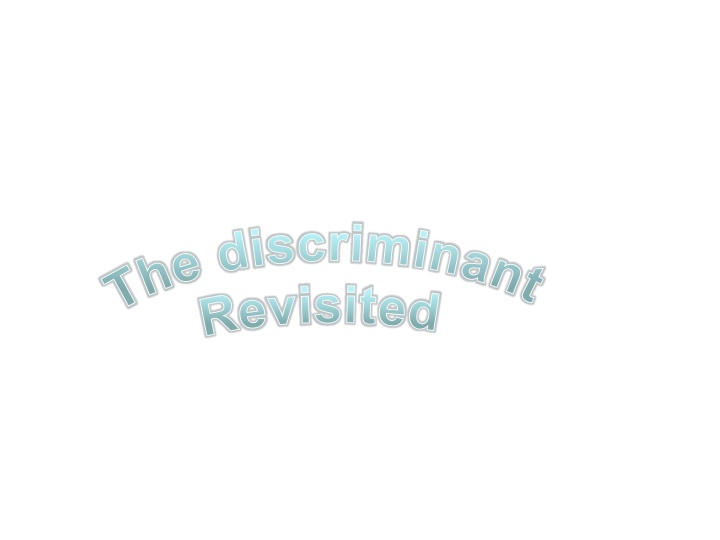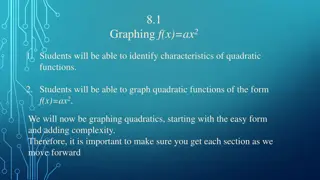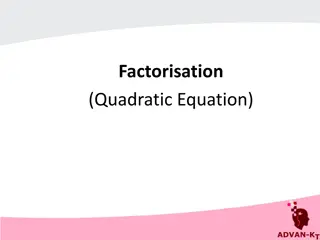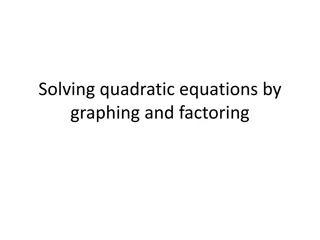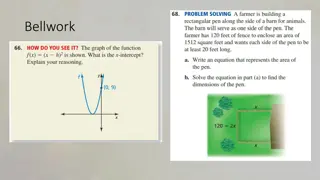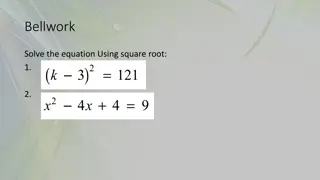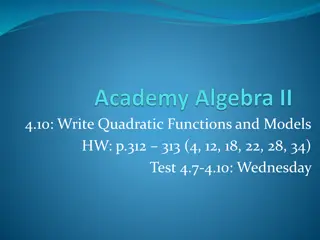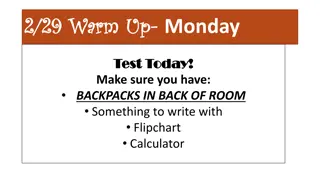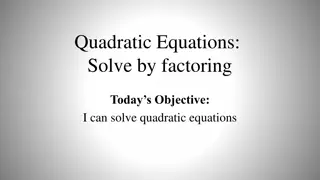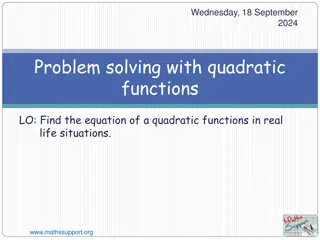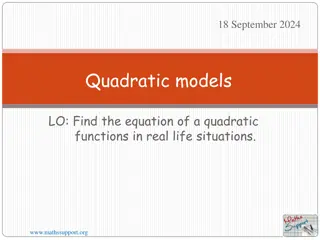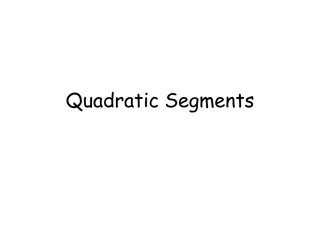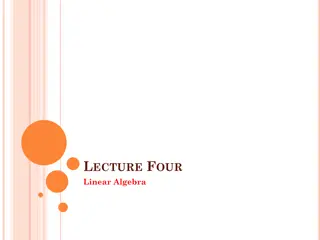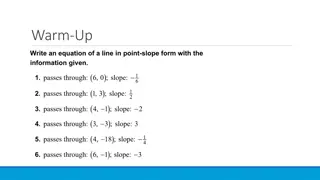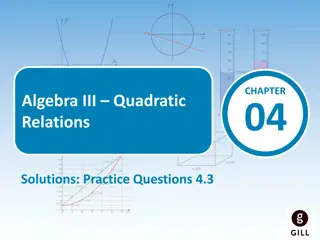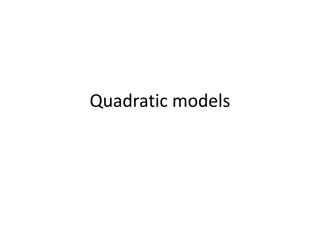Solve Quadratic Inequalities and Real-world Problems
Solving quadratic inequalities and real-world problems involving discriminants, inequalities, and quadratic equations. Practice interpreting solutions and applying mathematical concepts to practical scenarios.
Download Presentation

Please find below an Image/Link to download the presentation.
The content on the website is provided AS IS for your information and personal use only. It may not be sold, licensed, or shared on other websites without obtaining consent from the author.If you encounter any issues during the download, it is possible that the publisher has removed the file from their server.
You are allowed to download the files provided on this website for personal or commercial use, subject to the condition that they are used lawfully. All files are the property of their respective owners.
The content on the website is provided AS IS for your information and personal use only. It may not be sold, licensed, or shared on other websites without obtaining consent from the author.
E N D
Presentation Transcript
The discriminant Revisited
Inequalities and Discriminant KUS objectives BAT solve problems with Inequalities and the discriminant Starter:
WB 23 exam type problem A stunt-person will jump off a 20 m building. Their height from the ground is modelled by h = 20 5t2 where h = distance above ground (m), and t = time from jump (seconds A high-speed camera is ready to film him between 15 m and 10 m above the ground When should the camera film them? 15 < 20 5t2< 10 1 < ? < 2 "Film from 1.0 to 1.4 after jumping
WB 24 i) Solve 5x 2 > 3x + 7 ii) Solve ?? ?? ?? < ? iii) Solve to find when both inequalities hold true i) Solve 5x 2 > 3x + 7 2? 2 > 7 2? > 9 ? > 4.5 ii) Solve ?? ?? ?? < ? 3 4 5 6 7 8 9 (? + 2)(? 9) < 0 2 < ? < 9 -2 -1 0 1 2 3 4 5 6 7 8 9 iii) Solve to find when both inequalities hold true 4.5 < ? < 9
WB 25: Problem in context The specification for a new rectangular car park states that the length L is to be 18 m more than the breadth and the perimeter of the car park is to be greater than 68 m The area of the car park is to be less than or equal to 360 m2 Form two inequalities and solve them to determine the set of possible values of L ? ? ?? ??? ?? ??? ??? ? (? + ??) ? ?? ? -12 ? ?? ?? + ? ? ?? > ?? ?? ?? > ?? ? > ?? Combined solutions gives 26 < ? ??
WB 26 Challenge double quadratics Sketch a graph to show the simultaneous solution to both these inequalities ?2 3? 10 < 0 and ?2+ ? + 6 > 0 Label the intersections and solution on your sketch Check your answer using graph software
WB 26 Challenge double quadratics Solution Sketch a graph to show the simultaneous solution to both these inequalities ?2+ 3? + 10 > 0 and ?2+ ? 6 < 0 -2 < x < 5 -3 < x < 2 Combined solutions gives -2 < x < 2
WB 27 The equation 8?2 4? ? + 3 = 0, where k is a constant has no real roots. Find the set of possible values of k ?2 4?? < 0 16 + 32(? + 3) < 0 32? < 112 ? < 7 2
WB 28 ? ? = ?3 ?? + 16, where k is a constant a) Find the set of values of k for which the equation f(x) = 0 has no real solutions If k = 4 b) Express f(x) in the form (? ?)2+? c) Find the minimum value of f(x) and the value of x for which this occurs ?2 4?? < 0 ?) ?2 64 < 0 8 < ? < 8 (? 2)2+12 ?) ?) minimum value when ? = 2 giving ? ? = 12
KUS objectives BAT solve problems with Inequalities and the discriminant self-assess One thing learned is One thing to improve is
